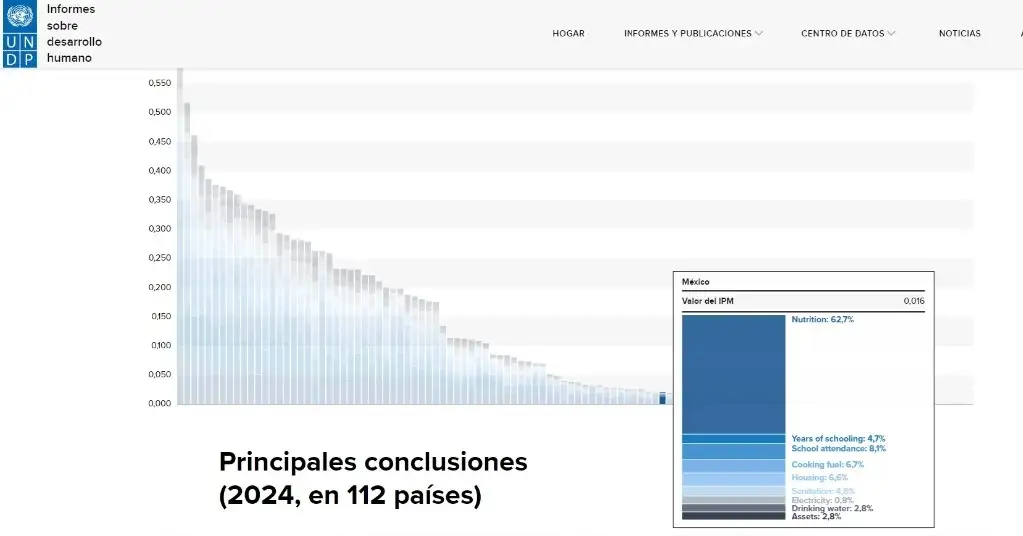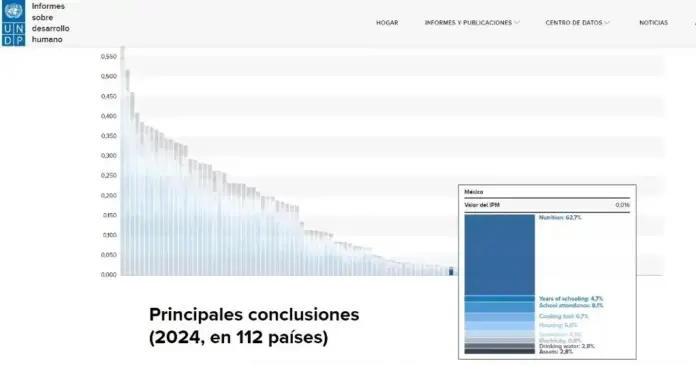
Mexico ranked 77th out of 193 countries in the Human Development Index (HDI), an improvement of 11 positions in the last two decades, the United Nations Development Program (UNDP) announced in a report published this Thursday.
In the period between 2000 and 2022, the last year covered by the report released yesterday, Mexico improved in the indicators of health, education and standard of living, which are the major items that make up the HDI.
Between 1990 and 2022, the value of Mexico’s HDI changed from 0.666 to 0.781, an increase of 17.3 percent, the report stressed.
With the value reported for the last year, Mexico returned to the level it had in 2019, before the covid-19 pandemic, and it is the highest point for the country since the measurement exists.
In 1995, when the country fell into an economic crisis following the devaluation of the peso, Mexico’s HDI was 0.678; in 2000 it rose to 0.079 points.
With the 77th place in the world, Mexico is in a better position than Sri Lanka and Iran, which are ranked 78th, and also surpasses Bosnia and Herzegovina, which is ranked 80th.
In contrast, Mexico is surpassed by countries such as Armenia, which is ranked 76th on the list; China in 75th place and Albania in 74th place.
The two countries with the best HDI are Switzerland and Norway, while the two with the worst level are Somalia and South Sudan, according to the UNDP report.
According to the UNDP report, between 1990 and 2022, life expectancy in the country increased by 4.9 years, to reach an average of 74.8 years. In terms of schooling, the country improved from 3.3 years to 14.5 years, and in terms of per capita income (i.e., the income measured per inhabitant of a country), Mexico advanced, in the reference period, 29.9 percent, to a total of 19,138 dollars, in constant 2017 prices.
For its part, Brazil, the largest economy in Latin America, is ranked 89th on the list, its life expectancy in 2022 was 73.4 years; the level of schooling is 15.6 years and its per capita income was 14,616 dollars.
Argentina, a country considered the third economy in the region, behind Brazil and Mexico, was ranked 48th on the UNDP list, considered a very high level by the organization; Their life expectancy in 2022 was 76.1 years, their schooling was 19 years, and their per capita income was 22,048 dollars.
Global overview
According to the UN and Oxfam HDI, 1.1 billion people live in extreme poverty, and almost half of them are in the five countries with the highest levels of poverty, which are India (234 million), Pakistan (93 million), Ethiopia (86 million), Nigeria (74 million) and the Democratic Republic of Congo (66 million).
In Latin America, 5.8 percent of the population – 34 million – suffer from multidimensional poverty, that is, without access to health services or quality of life, among other factors. Haiti leads the list in the region, with 41.3 percent of the population in acute poverty, followed by Guatemala with 28.9 percent.
More than half of all people living in poverty — 584 million — are under the age of 18, with 317 million in sub-Saharan Africa and 184 million in South Asia, the report said. In Afghanistan, where poverty has increased, the percentage of children living in poverty is even higher: nearly 59 percent.
UNDP and Oxford University noted that this year’s report focused on times of conflict because 2023 saw more conflict than any other period since World War II, with a record 117 million people forced to flee their homes due to conflict, disasters and other factors.
Source: jornada






